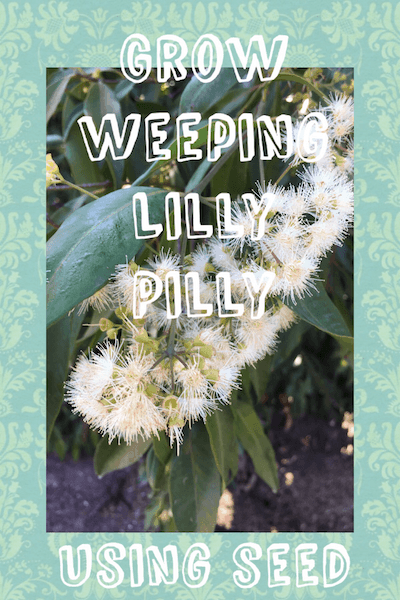
This is an article detailing how we propagate waterhousea floribunda- weeping lilly pilly using seed.
Waterhousea floribunda is a beautiful Australian native tree. It’s a rainforest tree with a natural range stretching from the middle of New South Wales up to the middle of Queensland. We grow it very successfully here in southern Victoria. I actually find it to be one of the more frost hardy varieties of lilly pilly.
Weeping lilly pilly’s make a magnificent privacy screen. They made it onto my favourite plants for privacy list. They are also a striking specimen tree in their own right. We have planted 4 throughout our home gardens. We grow thousands each year in the nursery and the seeds collected here are from one of the trees in our garden.
Growing the seeds is super easy, so long as you’re patient.
Collect the seed
Waterhousea floribunda flowers in the middle of summer here in Victoria. I wouldn’t be surprised if it flowers earlier in warmer climates.
The flowers form in clusters and are tiny little explosions of white. The flower looks very much like a gum tree flower.
Bees and birds love the flowers and pollination seems to be almost 100% on our trees.
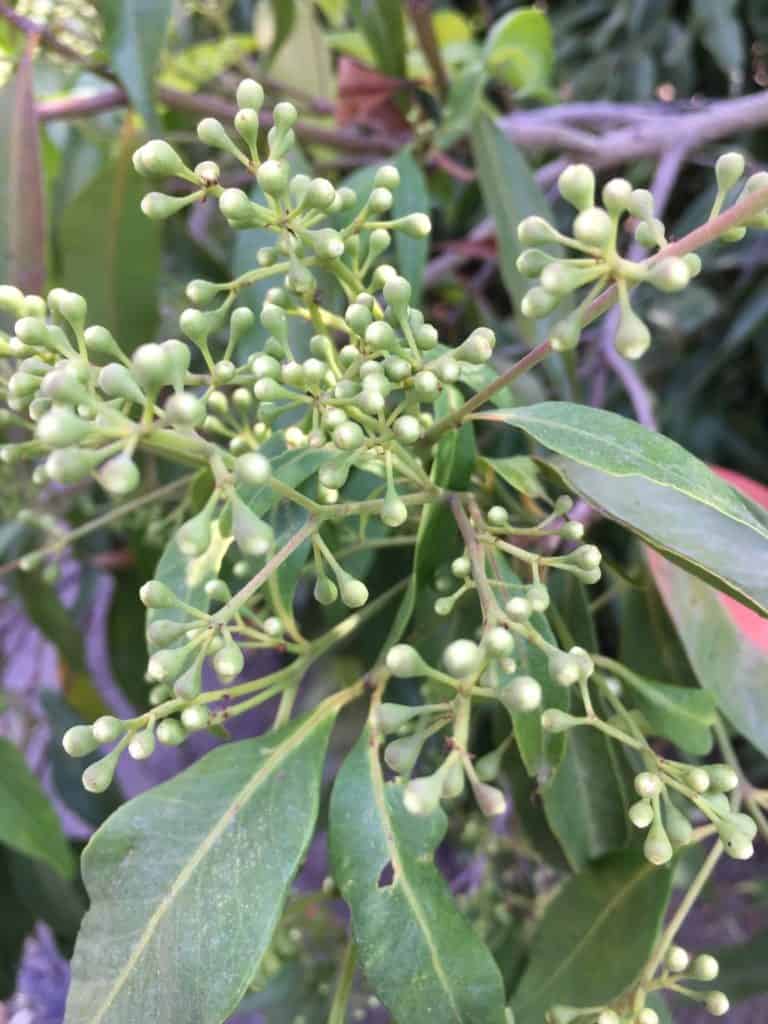
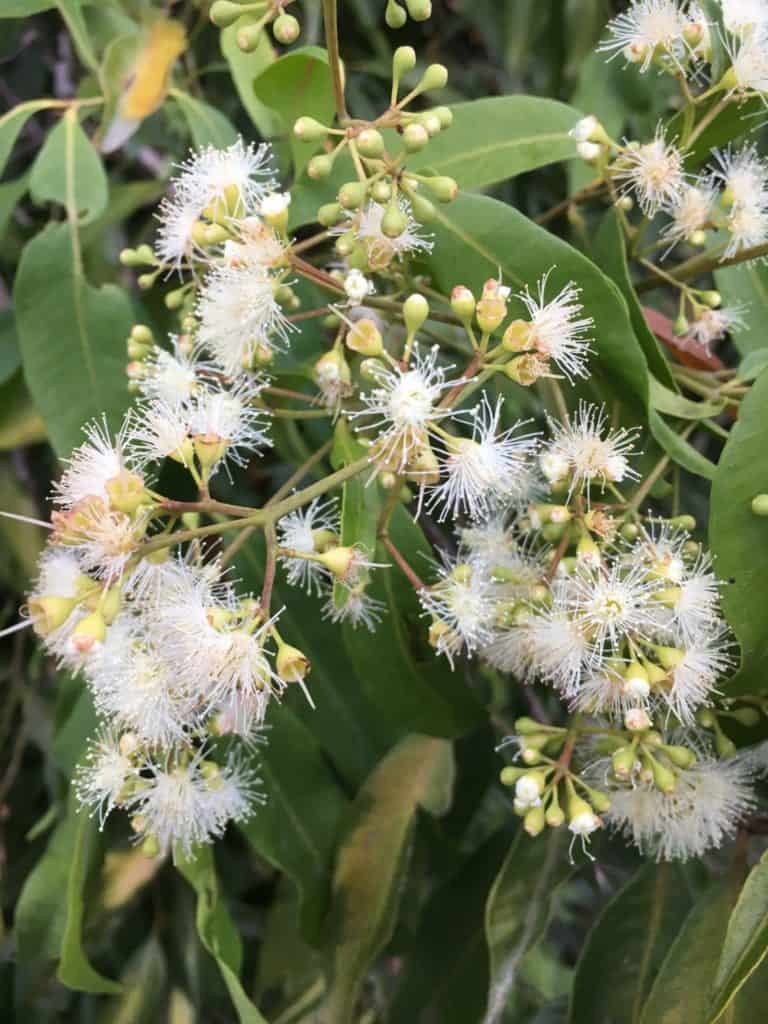
Once the flowers have finished it will take about 3 months for the seed to ripen for harvesting. The seed doesn’t change colour as it does on other lilly pilly varieties such as Syzigium and Acmena. Waterhousea seed remains green, sometimes there might be a slight rosy hue.
The seed looks quite plump when it’s ready to harvest. We usually collect our seed in May (late autumn). If you’re unsure just wait till the seeds start dropping or fall off into your hand when you grab a cluster.
Within each ripe berry is only a single seed. The seed on weeping lilly pilly’s is nowhere near as fleshy as the other lilly pillys I have mentioned, and I’m dubious that it can be used for culinary purposes as the other varieties can.
The seeds will appear in large clusters and it doesn’t take long to harvest hundreds or even thousands. We just remove them in large handfuls and put into a large bucket
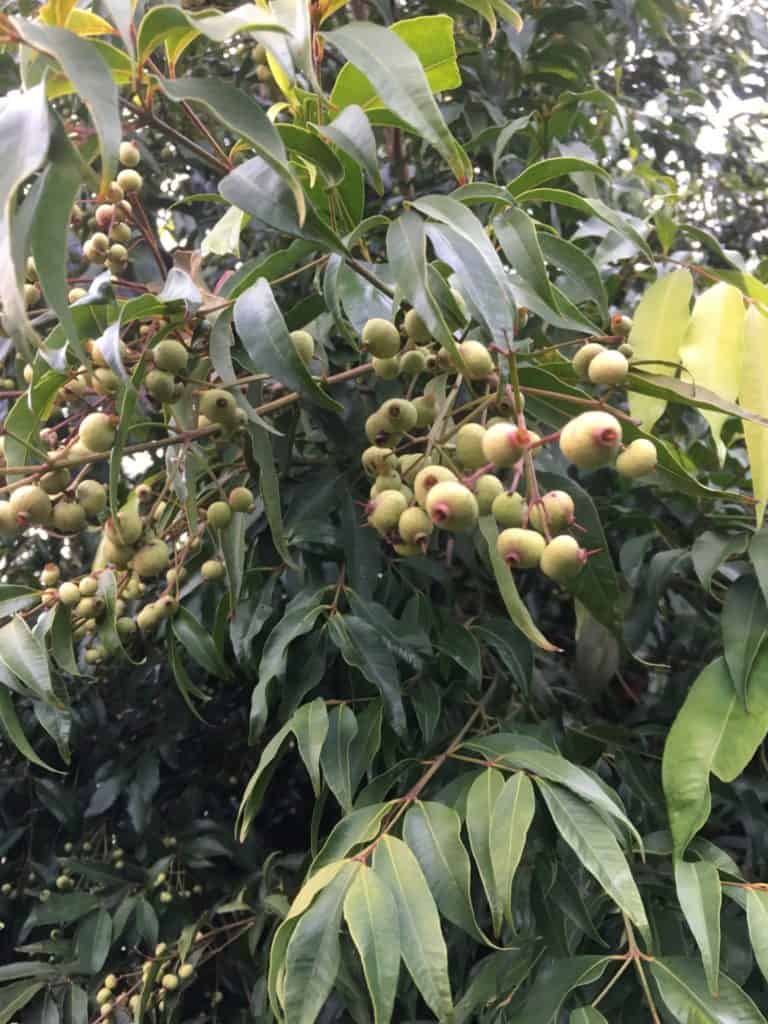
Sowing the seeds
Some say that removing the outer shell of the berry will lead to faster germination times. We have found this not to be true and incredibly time consuming.
We like grow the berries in a used styrofoam vegetable crate. Any container will do providing water can drain away. Also try and use a container at least 15cm (3.5″) deep, as the main root likes to go straight down.
First we place perlite in the bottom of our container about 5-6cm (2″) deep. This we find helps slow the growth on the early sprouting seeds.
It gives us much more uniform plants to pot up later. This is because the perlite has no nutrients but still allows a good uptake of water to the seedlings.
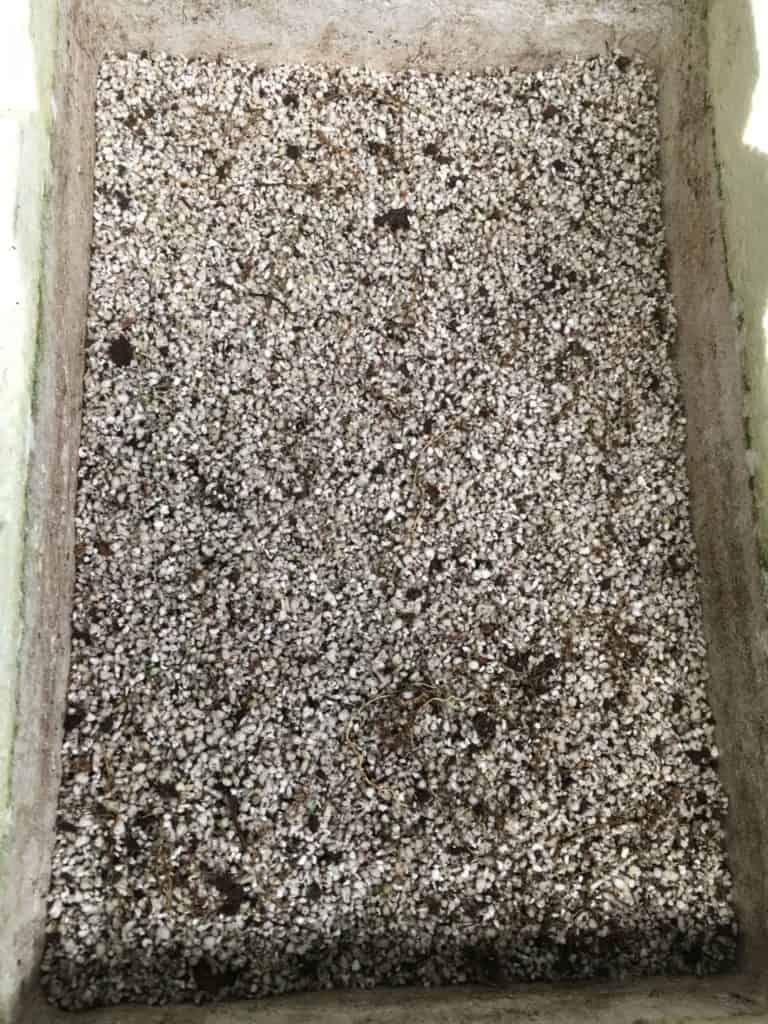
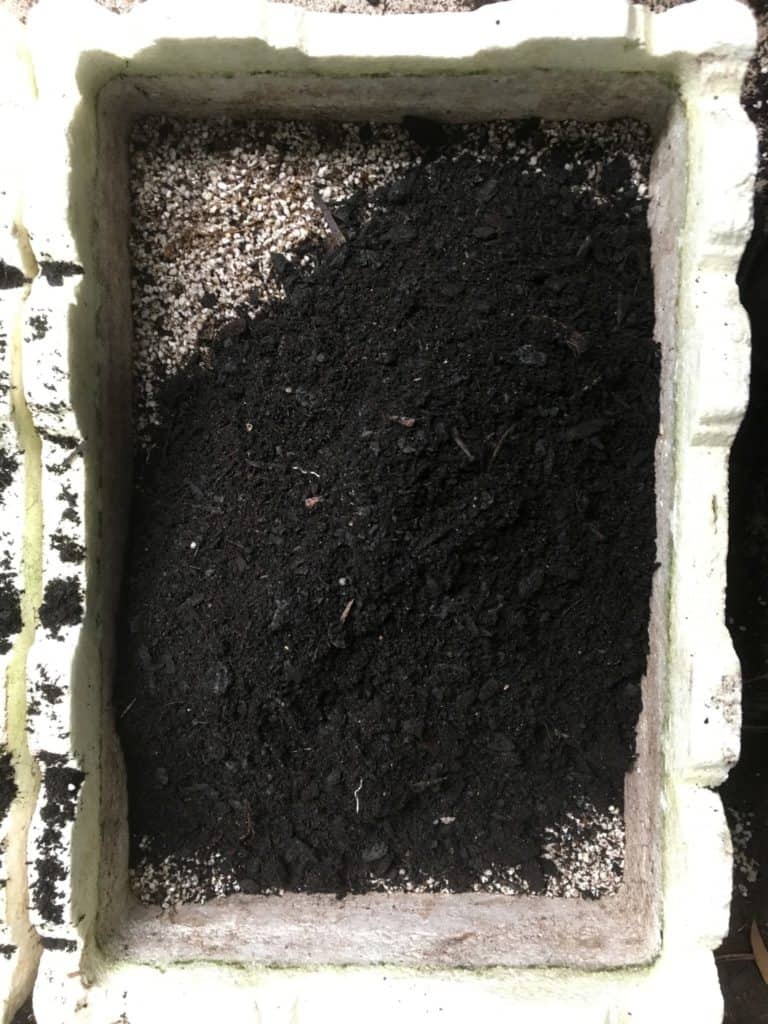
When we have used straight potting mix the early sprouting seedlings grow very quickly as they feed on the abundance of nutrients in the potting mix. This leads to plants of varying heights, but also a lower survival rate as the larger seedlings outcompete the smaller ones.
In the past we have used very cheap potting mix with very little nutrients and this has provided much the same results with smaller more uniform seedlings.
So the way we did these seeds in this article was with the perlite first and then our good quality potting mix over the top.
We then spread the seed/berries as evenly as possible over the surface of the potting mix.
Then very cover the berries with soil, the general rule with seeds is to cover them in their own height. Waterhousea floribunda seeds are approximately 1-2cm (1/4″) so that’s how much potting mix we place over the top.
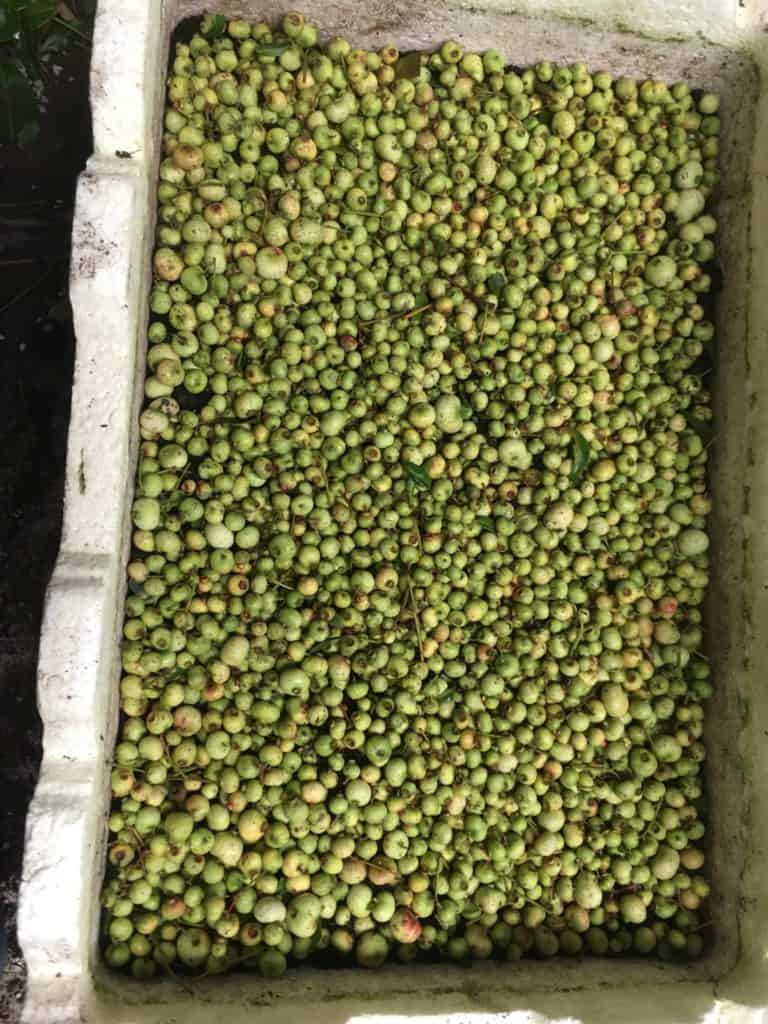
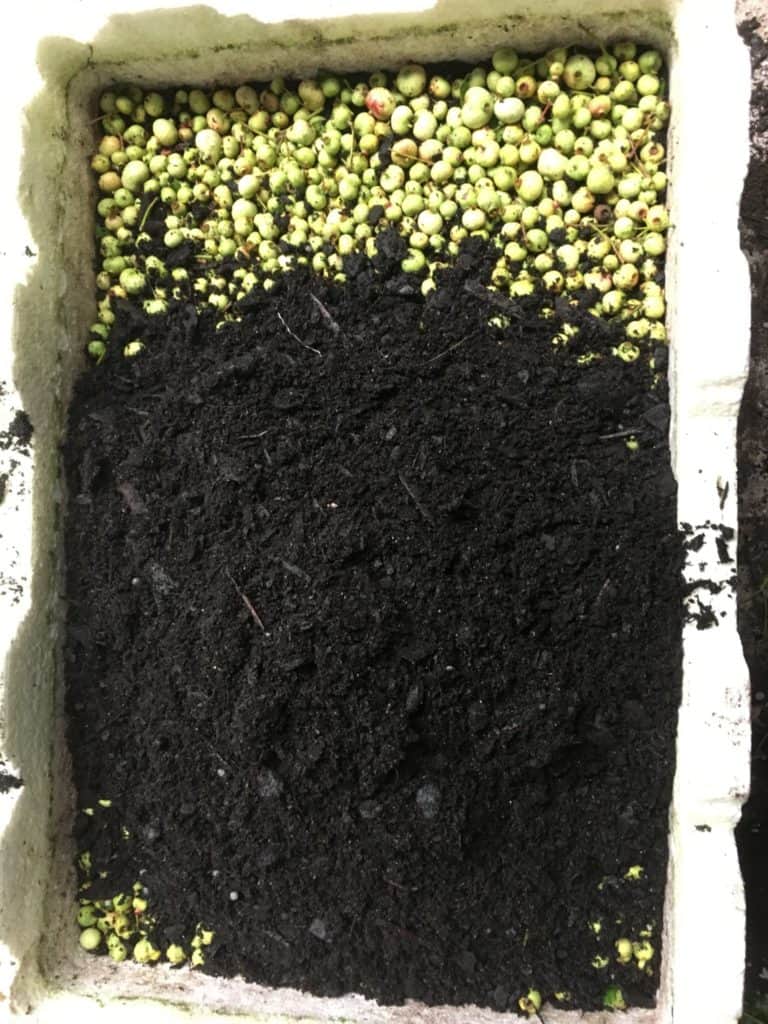
As you can see we sow the seeds very closely together. This is simply because we grow so many and this saves on room. You obviously do not need to sow them this close. But do keep in mind they make a fantastic privacy screen.
When planting as a screen plant them 1-2m (3-6ft) apart so depending on the length of your fence you may need quite a few! My motto is it never hurts to have extras.
So now that the seeds are covered they should be stored in a shaded area. Remember Waterhousea is a rainforest plant so in their native environment the young seedlings are growing in quite a dark damp area, so do your best to replicate those conditions.
Once the plants are past the seedling phase they are able to withstand full sun.
Germination and potting
We sow the seeds once ripe, which for us is usually in May (remember that’s mid Autumn in the southern hemisphere- for any northern hemisphere readers). By October (mid Spring) we have a carpet of weeping lilly pilly seedlings of 5-7.5cm tall (2-3″). So from sowing time, to potting time, is generally 6 months for us.
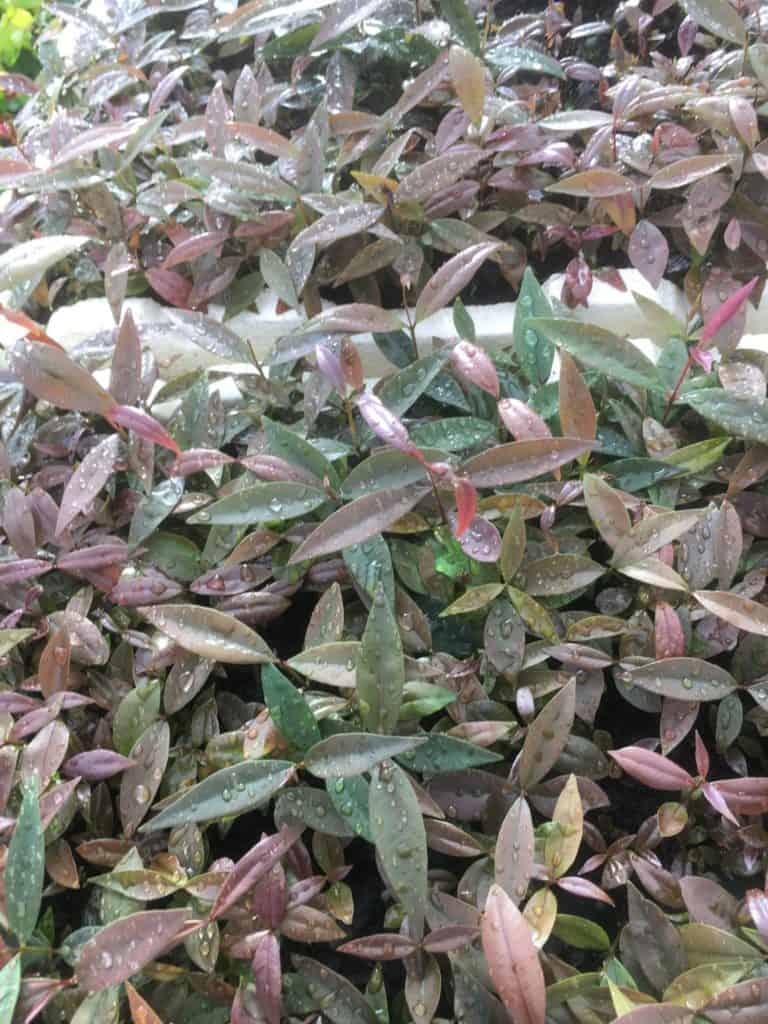
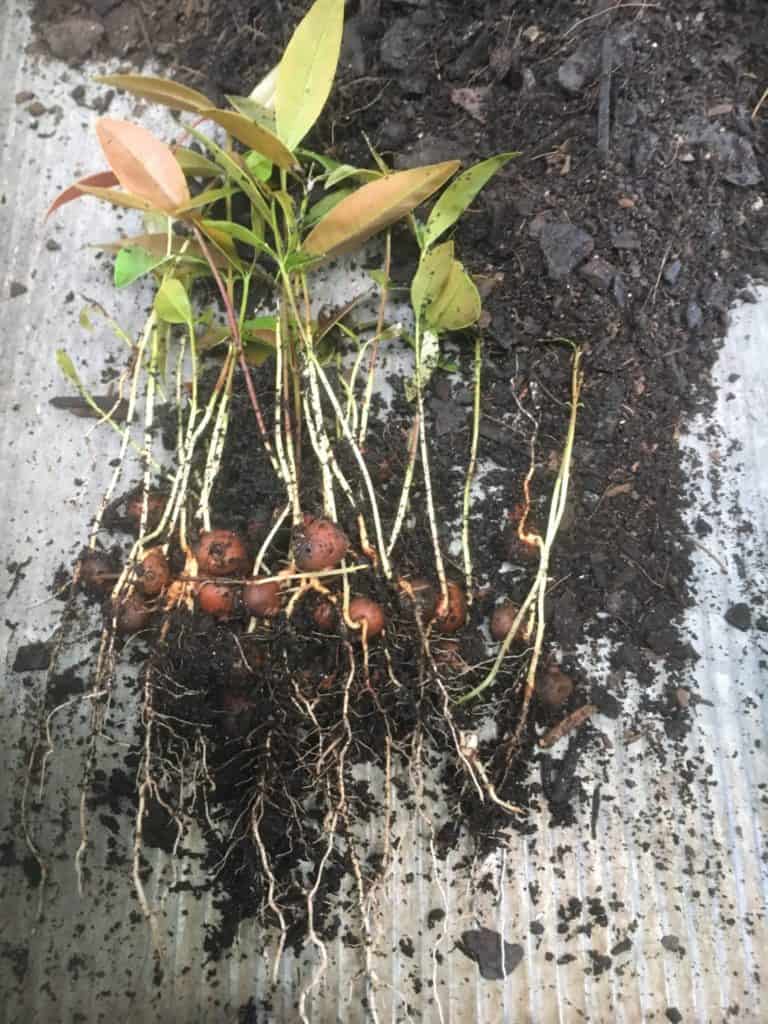
Once the seedlings reach this height we pot them into a small 50mm (2″) pot. You could easily place them into a 150mm (6″) pot if you wish.
Sometimes the seedlings can be a little stubborn to remove from their crate. When this occurs we use a small bamboo skewer to gently pry them out. You don’t want to damage the main tap root of the seedling.
We use the 50mm (2″) pots as we can fit 42 into our seedling trays and it greatly reduces the area that the small plants require in the nursery.
Whatever pot you choose the seedlings should be planted into a good quality potting mix with loads of organic material and trace elements. If potting into a larger pot, some control release fertiliser would be advised also.
Another thing we like to do with any freshly potted seedlings in water with a seasol solution with chelated iron, we find this gives the plants a little added boost in developing strong robust roots. Which in turn allow for a quicker uptake of the available nutrients and therefore a faster growing plant.
Wether you choose to use seasol or not, ensure that you provide the seedlings a thorough watering especially for their first drink in their new pots.
Once they’re all potted, the seedlings should be again stored into a shaded area. The soil should be kept moist.
When the roots are filling the pot and the plants have doubled in size they can be placed into full sun and planted into the garden or even larger pots if you desire.
That’s about all you need to know to be able to propagate your very own Weeping lilly pilly’s.
I do hope you’ve found this article to be helpful in your gardening endeavours. If so, I would love if you left your email in the subscribe area.
We have also made a short little video showing the above steps if you’re interested. And we have created a propagation kit that contains most of the items we personally use when propagating plants in our nursery.
This kit is only available to those living in Australia. For those outside Australia we have a resource page that contains links to the products we use or similar. Click the link to check that out.
Thanks again and Happy Planting! 🙂
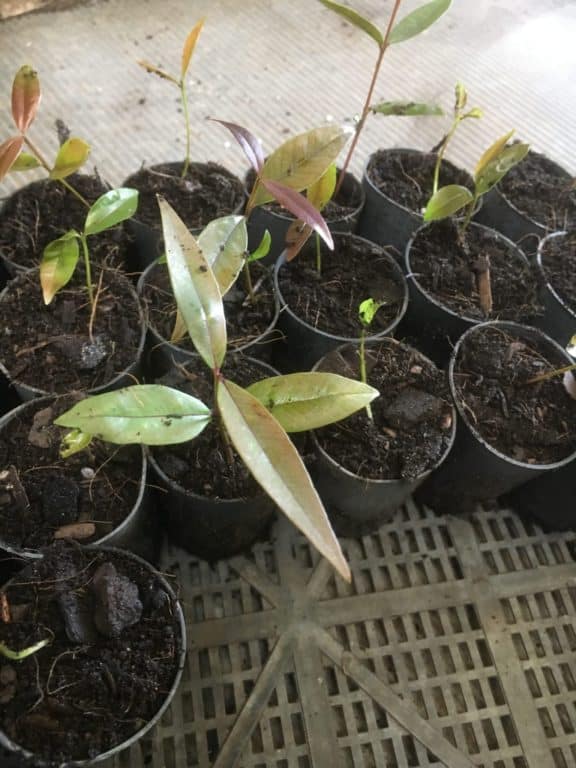
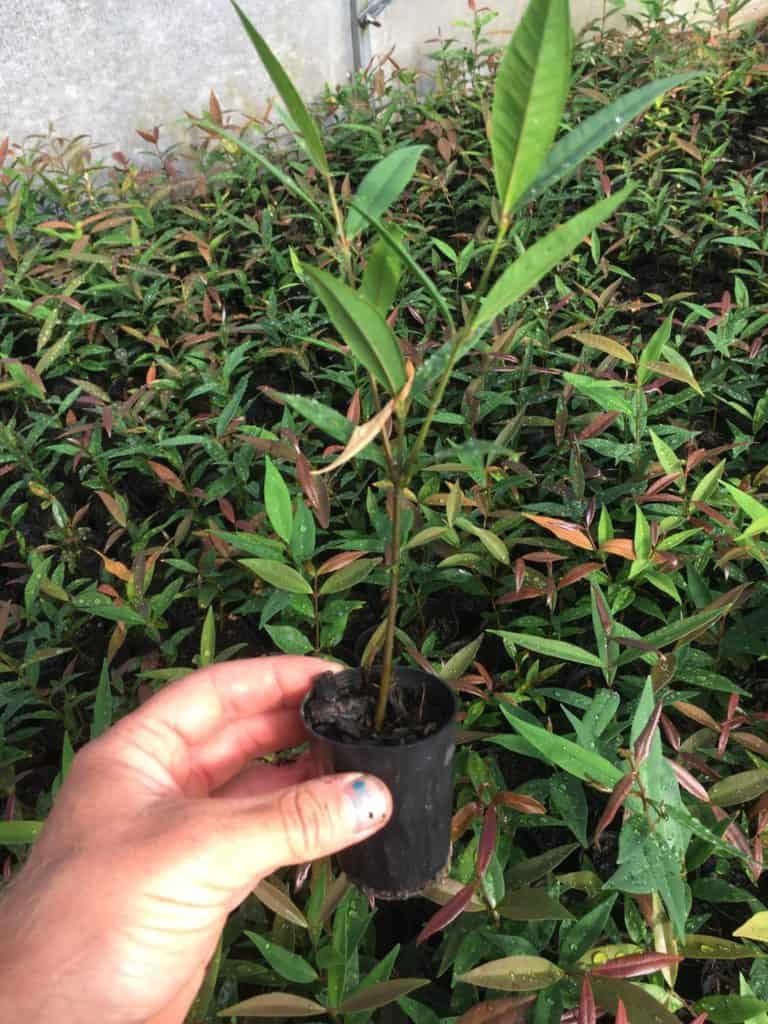
PROPAGATION KIT
We have also put together a resource page that contains links to the products we use or similar. If you want to check that out click the link.
Click here to see more plants we propagate
Waterhousea Propagation Video
Weeping lilly pilly information
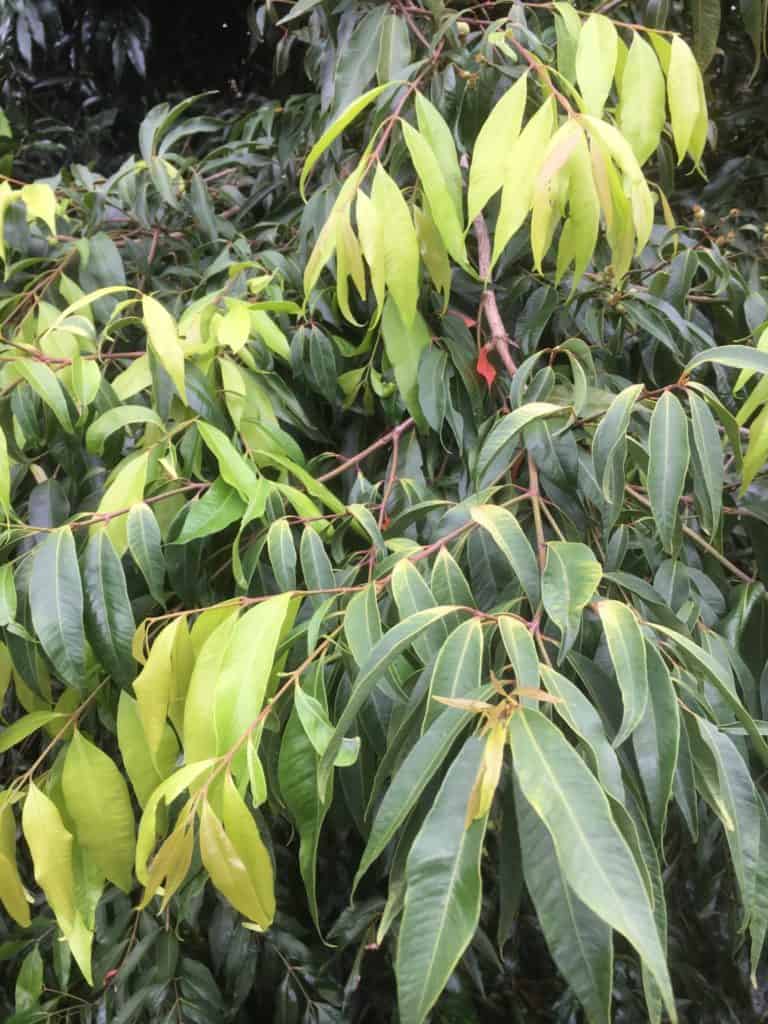
Waterhousea floribunda-Weeping lilly pilly
Waterhousea floribunda-Weeping lilly pilly is a medium to large evergreen tree. Forms a dense canopy of weeping foliage. A very attractive tree it produces clusters of white flowers during summer. It then produces greenish berries.
Although its quite a large tree it can be pruned to form a privacy screen. It’s grown as a screening plant and as a specimen tree. As a specimen it provides excellent shade areas.
Can be grown in a sunny or partly shaded position. Will tolerate light frosts without damage, but always bounces back even after a big frost. Being a rainforest plant it should be kept moist during warm dry spells.
Cultural notes
Botanical name: Waterhousea floribunda
Common name: Weeping lilly pilly
Family: Myrtaceae
Native to: Australia
Flowers: Summer
Position: Full sun/Part shade
Height: 15m
Width: 8m
